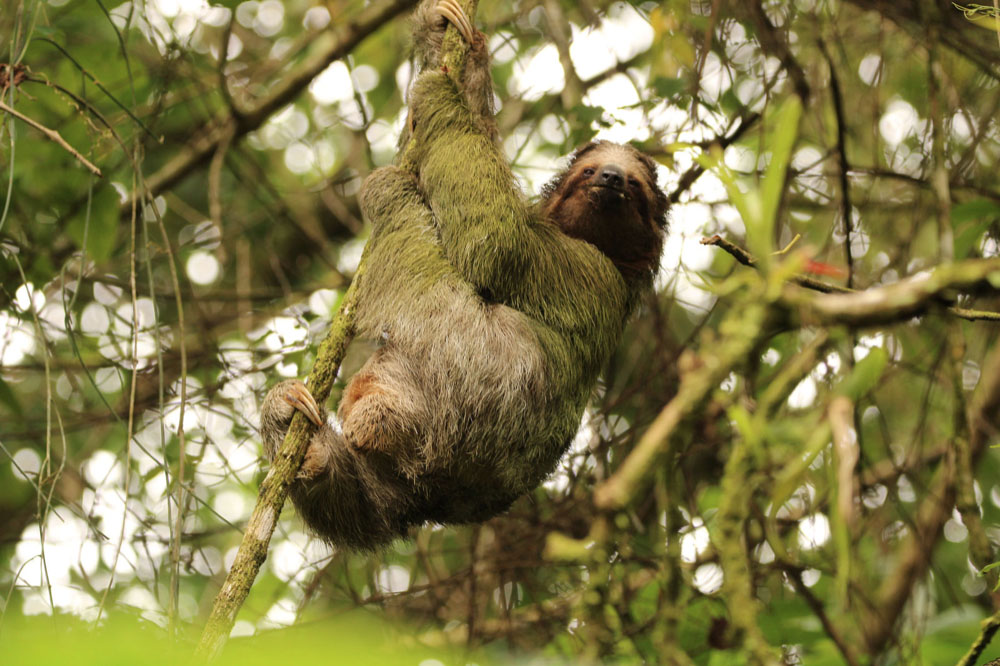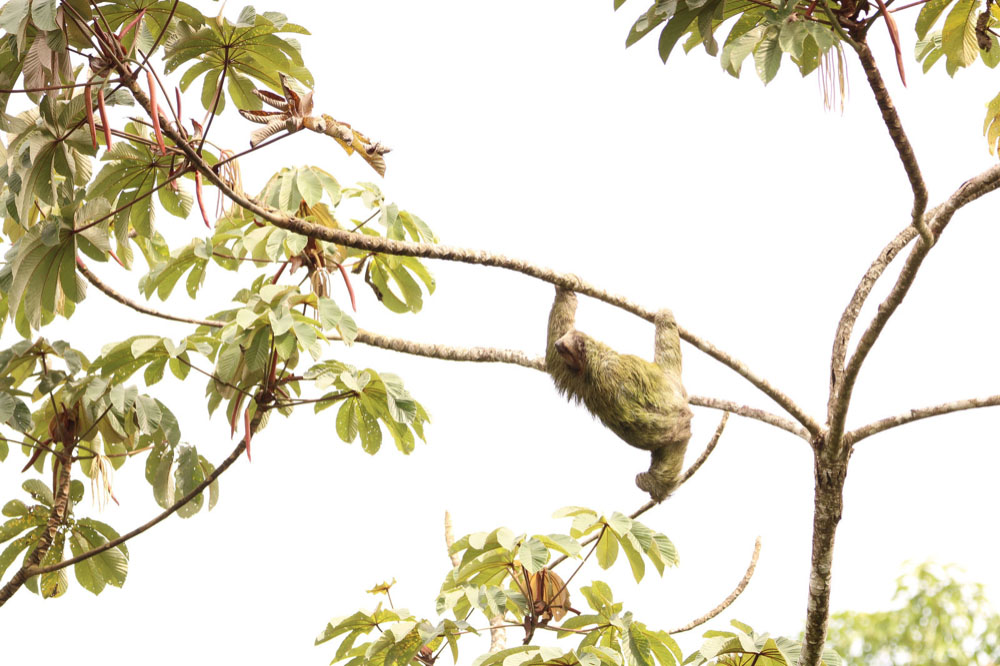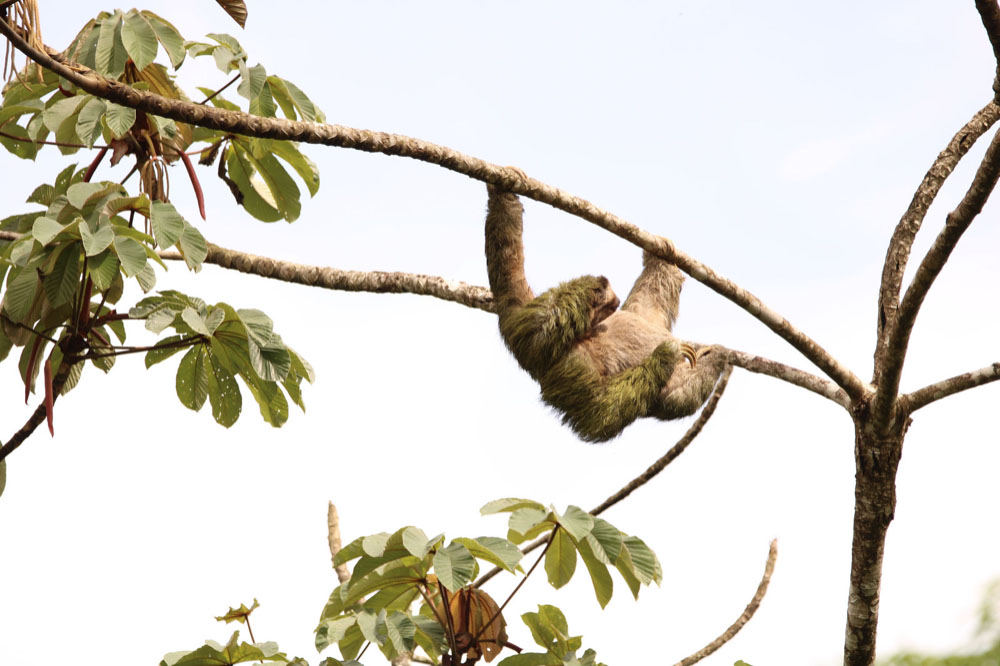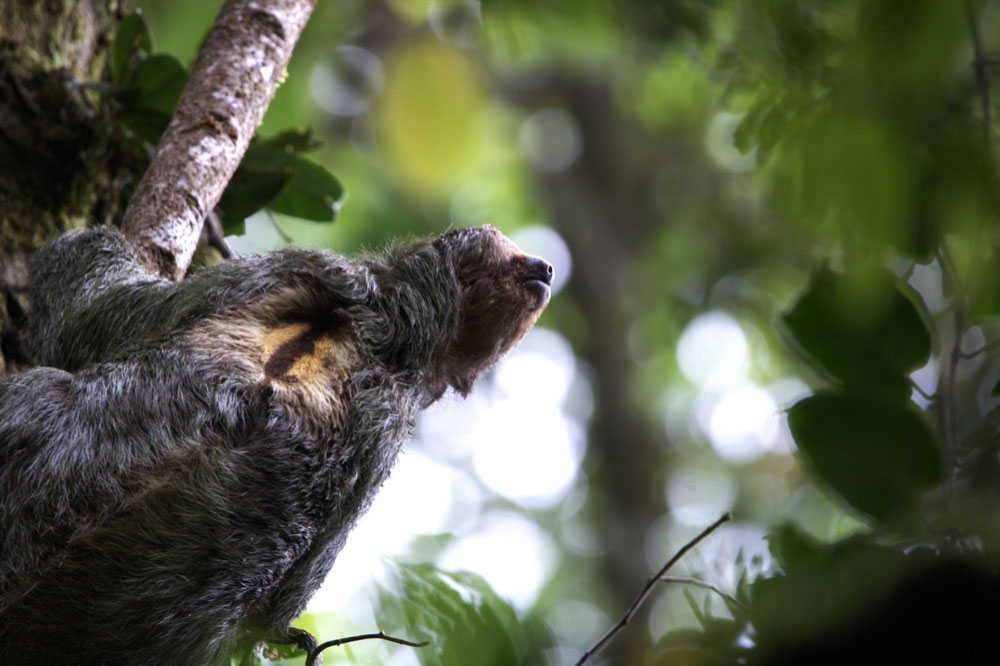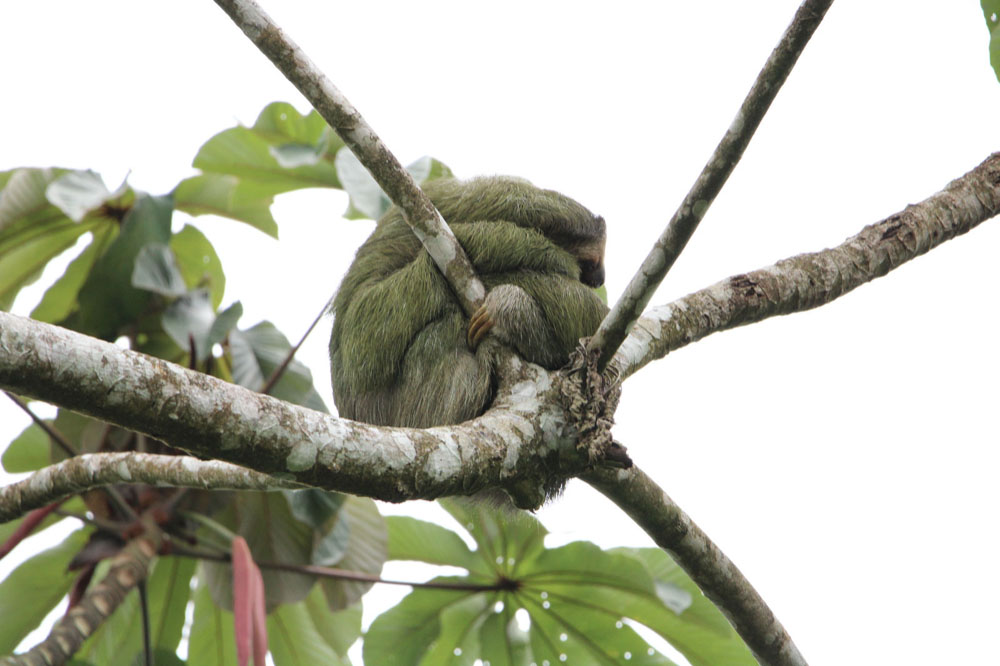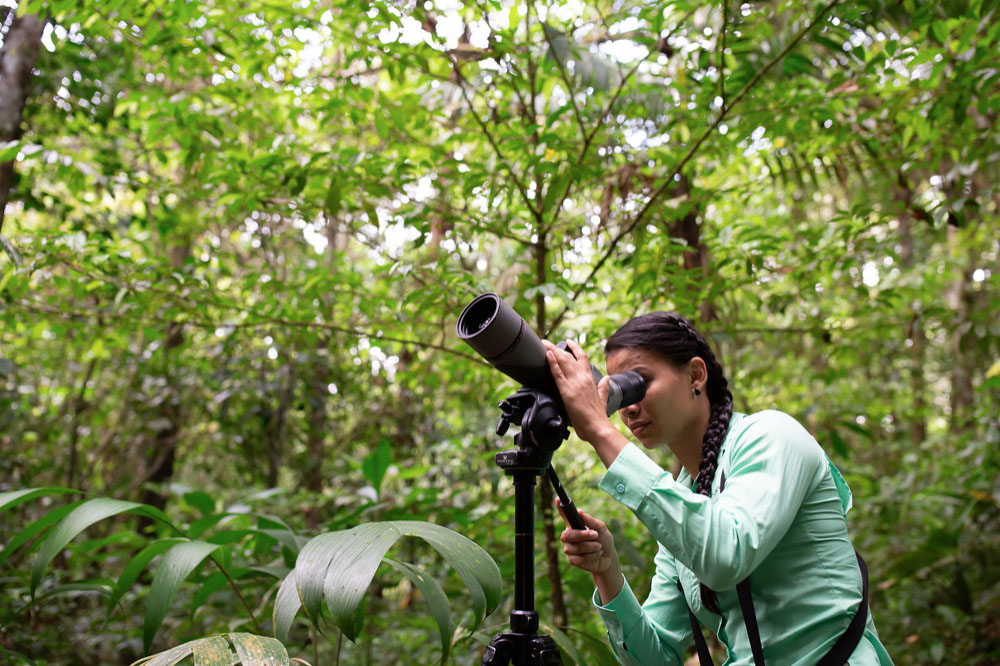
Costa Rica is filled with animals of all shapes and sizes. It is home to about 5% of the total species estimated worldwide which for a small country is pretty impressive. Wildlife spotting is inevitable and so much fun. You will spot them on the forest floor, in the sky, along riverbanks, swimming in the oceans, and of course, in the cover of trees. Up in the safety of the tree canopy, they will sleep, swing, jump, hang, and snack. What could be a favorite tree dweller in Costa Rica is our sleepy, slow Sloth and Chachagua Rainforest Hotel & Hot Springs has some resident sloths that keep our guests looking up into the trees constantly!
Thanks to its privileged location, Chachagua Rainforest Hotel, and Hot Springs sits between the Children’s Eternal Rainforest and the Arenal Volcano National Park. This means, that during your relaxing stay, not only will you enjoy one of the most beautiful corners of Costa Rica, you will be part of a very important area of protected land for many species of animals, birds, and plants. This special corner is also home to sloths, a definite favorite for guests and animal lovers.
Sloths are fascinating creatures that have captured the attention and imagination of people all over the world. These slow-moving mammals are known for their unique physical characteristics, such as their long arms and legs, their slow movements, and their calm and relaxed demeanor. Many questions arise about the world of sloths; what are their biology, behavior, and habitat? What role do they play in the ecosystems they inhabit?
What are sloths, anyway?
Sloths are tree-dwelling mammals that belong to the order Pilosa and the family Bradypodidae (three-toed sloths) and Megalonychidae (two-toed sloths). There are six species of sloths, and you will find them in the tropical rainforests of Central and South America, from Nicaragua to northern Argentina. Sloths are known for their slow movements, moving at an average rate of about 0.24 km/hour. While slow, this means, there is more time to observe them snuggled up in the forest canopy.
According to National Geographic, the Sloth is the world’s slowest animal. It is so sedentary that algae grow on its furry coat! This is a unique behavioral adaptation called algae farming. This is why you see a greenish hue that also works as camouflage in the Central American rainforests, they call home. What also helps them remain undercover is that they remain still for up to 15 hours a day as they are asleep and when they are awake, they still don’t move a lot.
What types of Sloths can you spot in Costa Rica?
Costa Rica is home to two species of sloths: the two-toed sloth and the three-toed sloth. The two-toed sloth, also known as the Hoffman’s sloth, is a larger species that can weigh up to 10 kilograms. They have shaggy, brown fur and a round face. Unlike the three-toed sloth, the two-toed sloth has two long claws on its front feet and three on its back feet. This species is mostly arboreal and they live in the canopy of the rainforest, where it feeds on their favorite foods including, leaves, fruits, and flowers.
The three-toed sloth, also known as the brown-throated sloth, is a smaller species that weigh between 3 to 5 kilograms. They have shaggy, grayish-brown fur, and a pointed snout and they look like they are perpetually smiling too! As their name suggests, they have three long claws on both their front and back feet. This species is built for life in the treetops and can be found in the canopy of the rainforest, where it feeds on leaves, buds, and fruits.
Both species of sloths are known for their slow movements and low metabolism. They spend most of their time sleeping or resting and only come down from the trees once a week to defecate. Sloths are fascinating animals to observe in their natural habitat and could well be one of the most popular attractions for tourists visiting Costa Rica.
Sloths have a unique set of physical characteristics that allow them to thrive up in the trees. They have long, curved claws that they use to hang from tree branches and climb. Their long arms and legs, along with their flexible joints, make them highly adaptable to moving through the canopy. Sloths have a specialized stomach that allows them to digest the tough, fibrous leaves that make up the bulk of their diet.
Which species can I enjoy while staying at Chachagua Rainforest Hotel & Hot Springs?
At Chachagua Rainforest Hotel, guests may have the opportunity to see a three-toed sloth (Bradypus variegatus) in their natural habitat, as the hotel is surrounded by lush rainforest and is home to a number of resident sloths. One of the favorite Chachagua Sloths has even been given a name! She is called Lala, and recently became a mother. She is now accompanied by her baby that will remain clinging to her for the next nine months.
Lala and her fellow Chachagua Rainforest sloths can often be spotted hanging upside down from tree branches, sleeping or slowly moving about to feed on leaves and buds. There are many trees to choose from and they slowly yet surely move from tree to tree searching for food and comfortable branches to sleep on.
During the daily, complimentary Guided Nature Walk, Chachagua’s in-house naturalist guide will not only show you lots of fun and interesting things about the rainforest, but they will also do their best to spot the sleepy sloths that call Chachagua home. Thanks to their knowledge, they can identify the trees that sloths most like, so chances are you will spot one. Then it is time to just contemplate them and admire their serenity and meditative state!
Why are they soooooooo slow?
Sloths are herbivores, and they primarily feed on leaves, buds, and fruits. They have a slow metabolism, which means that they do not need to eat as much as other animals of their size. This low energy requirement allows them to conserve their energy, and they spend most of their day asleep.
Thanks to their very low-calorie diet for a mammal of its size, their metabolic rate is about 40-45% of what you would expect an animal of their weight. This means they have to move very slowly to conserve their energy.
If sloths are slow up in the treetops, they have an even a harder time moving around when on land. While they are physically adapted to tree life, their hind legs are very weak and provide no power when on the ground. Their long claws also make moving very difficult for them so they end up dragging their bellies while using their strong front legs to pull themselves forward. This means they are next to helpless in defending themselves against predators if they are caught on the land.
Did you know that Sloths are good swimmers?
Sloths are actually good swimmers. Those powerful, long front legs become very useful when swimming and they are really quite graceful.
How do sloths contribute to the rainforest?
Despite their slow movements and relaxed demeanor, sloths play a critical role in the ecosystem. They are a food source for a variety of predators as part of the natural food chain but they also serve as important seed dispersers thanks to their consumption of fruit. They excrete seeds throughout the forest. In addition, their slow movements and arboreal lifestyle help to create microhabitats and contribute to the diversity of the forest canopy.
Do sloths make sounds?
Yes, they do! Their sound actually triggered a nickname for them. Sloths are also called “Ais” thanks to the unusual call they have. It is a long, high-pitched call that echoes through the forests and sounds like “ahhh-eeee”. So, thanks to this cry, sloths are sometimes called ais which is pronounced as “eyes”.
So, when staying at Chachagua Rainforest Hotel & Hot Springs, keep your eyes open and focused on the rainforest canopy to spot our sleepy friends. Without a doubt, they are fascinating creatures that have a unique set of physical and behavioral adaptations that allow them to thrive in their treetop environment.
They are so special to Costa Rica that just recently, they were named a National Wildlife Symbol of Costa Rica which makes their presence in the forests even more special. This is why nature reserves like the one that Chachagua Rainforest Hotel and Hot Springs sit within and Costa Rica’s national parks become even more important as they become an additional way to guarantee the existence of these incredible animals.
So, when will you come and visit us and look for Lala and her baby? Chachagua Rainforest Hotel and Hot Springs will continue to ensure their safety in the protection of the rainforest canopy. See you sloth-spotting.
 English
English
